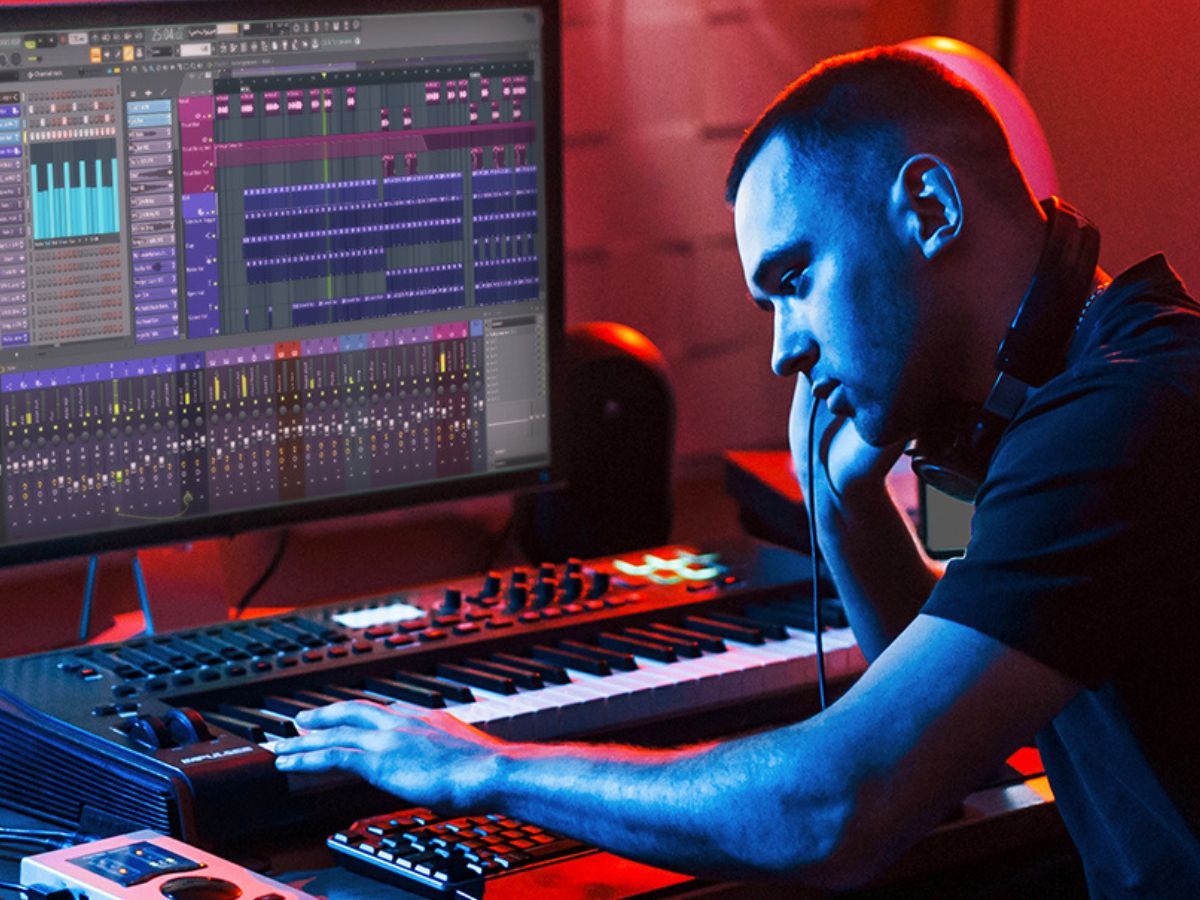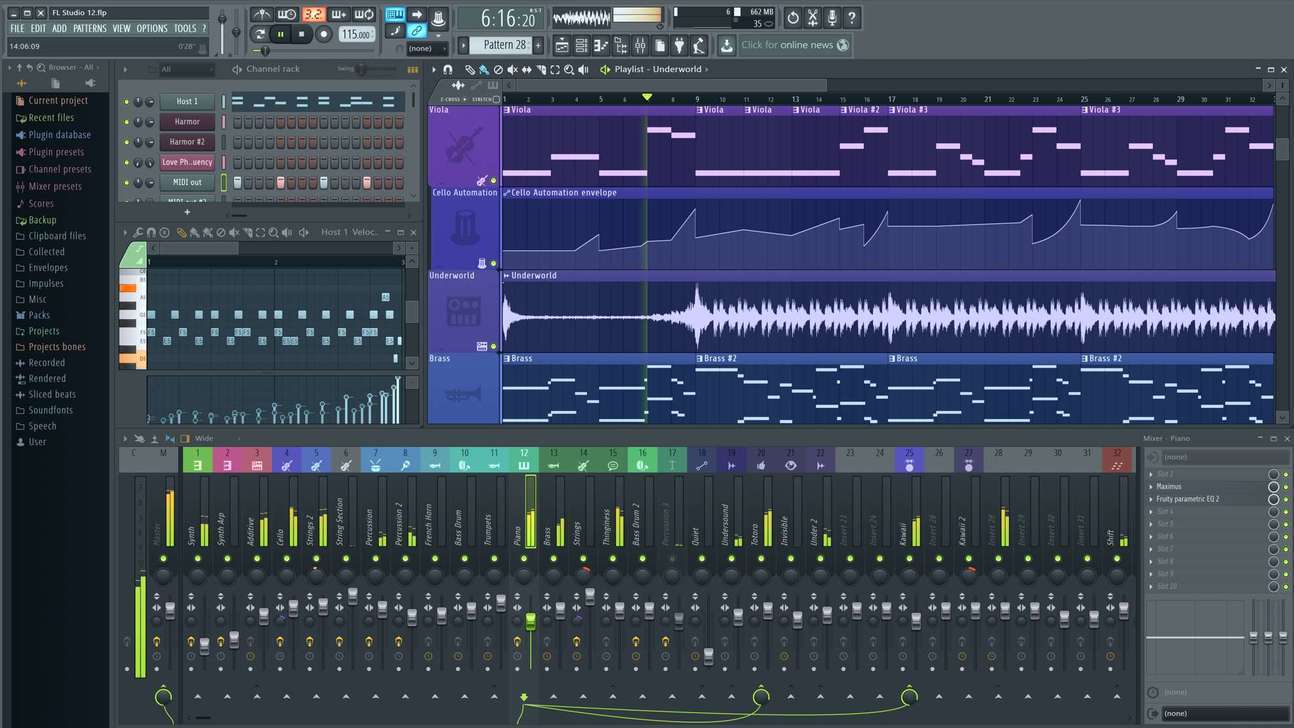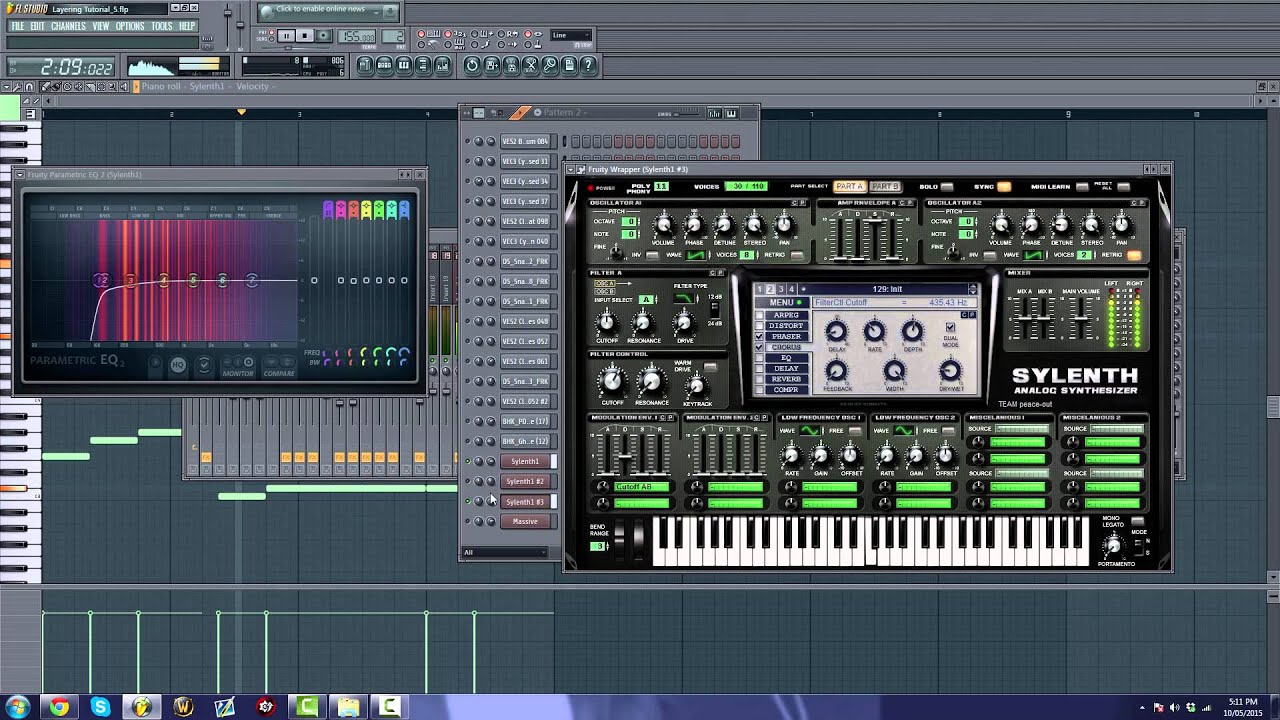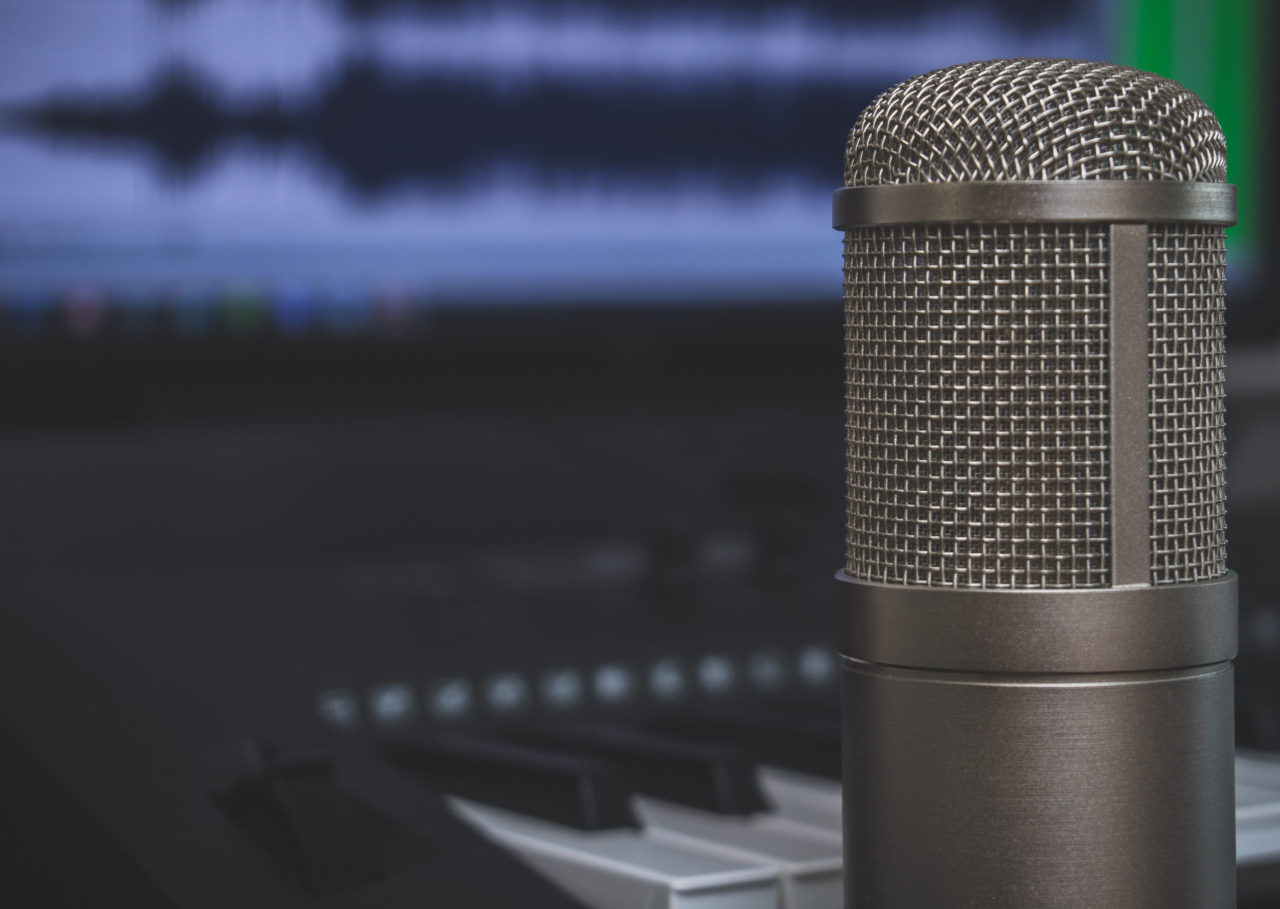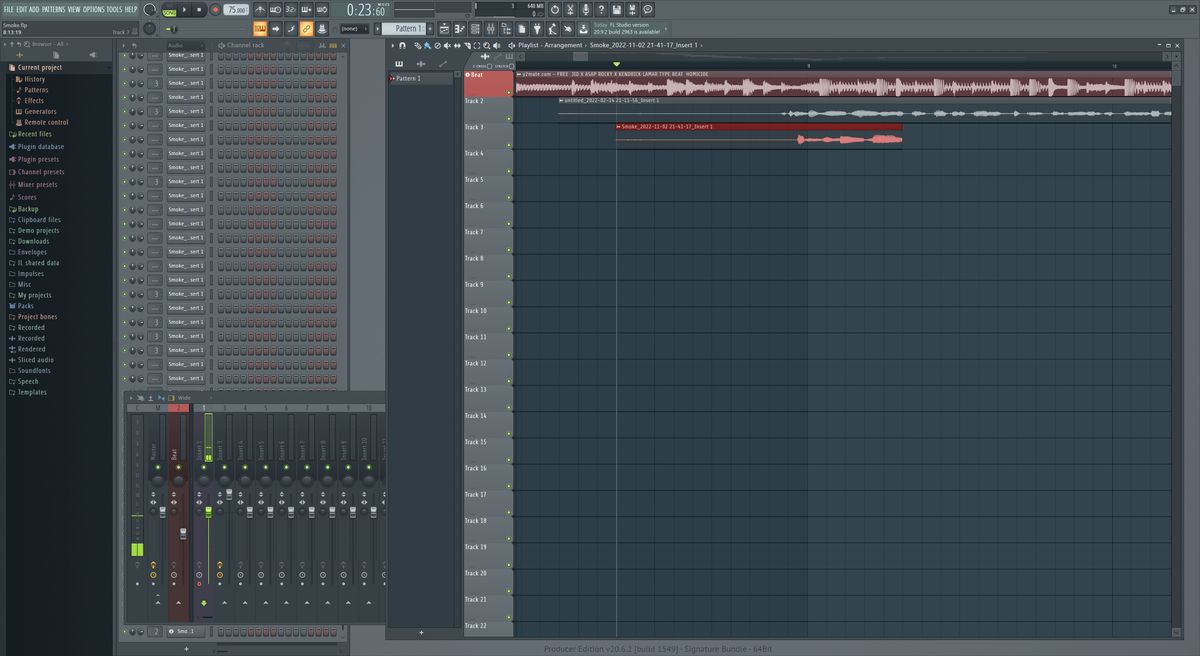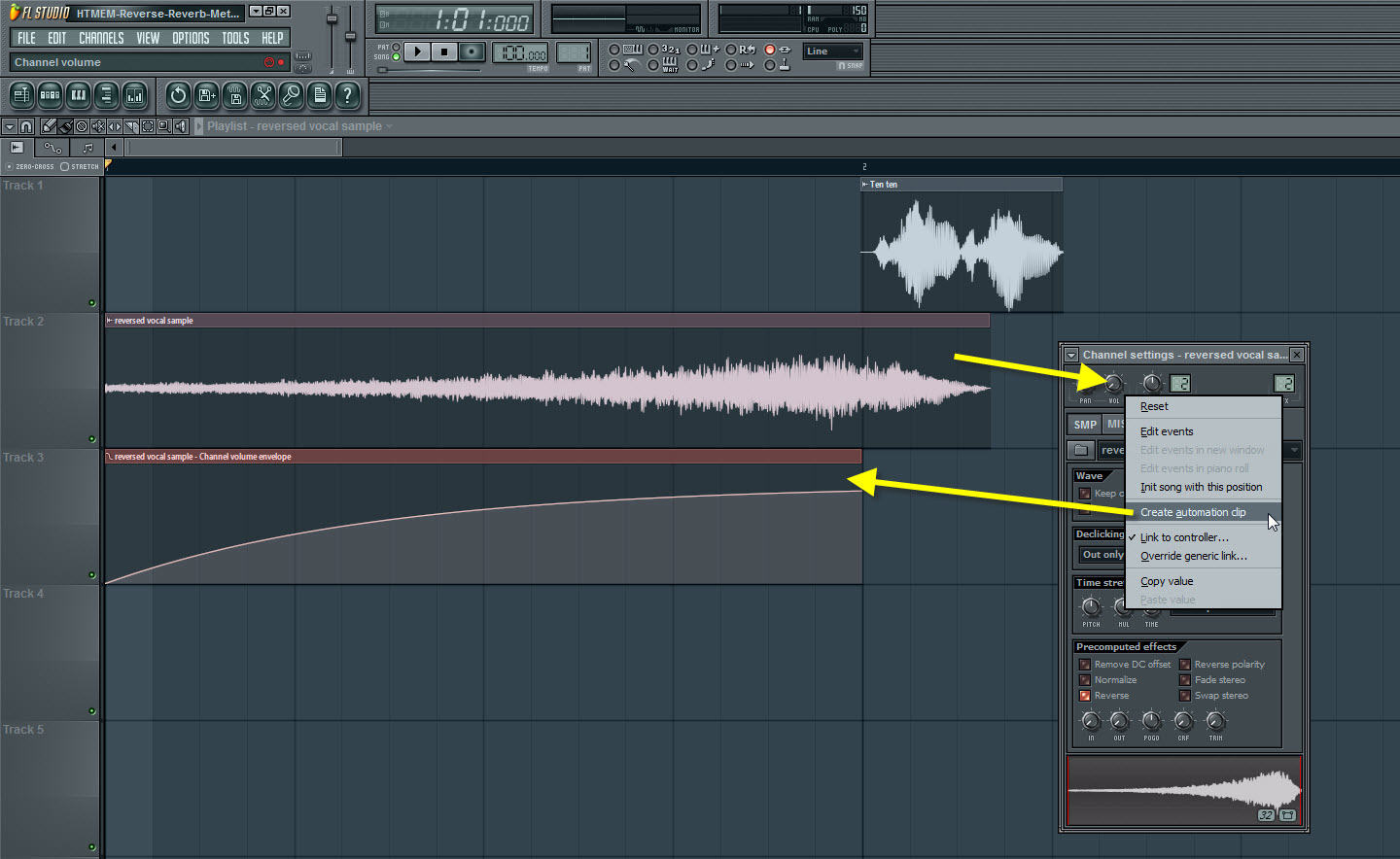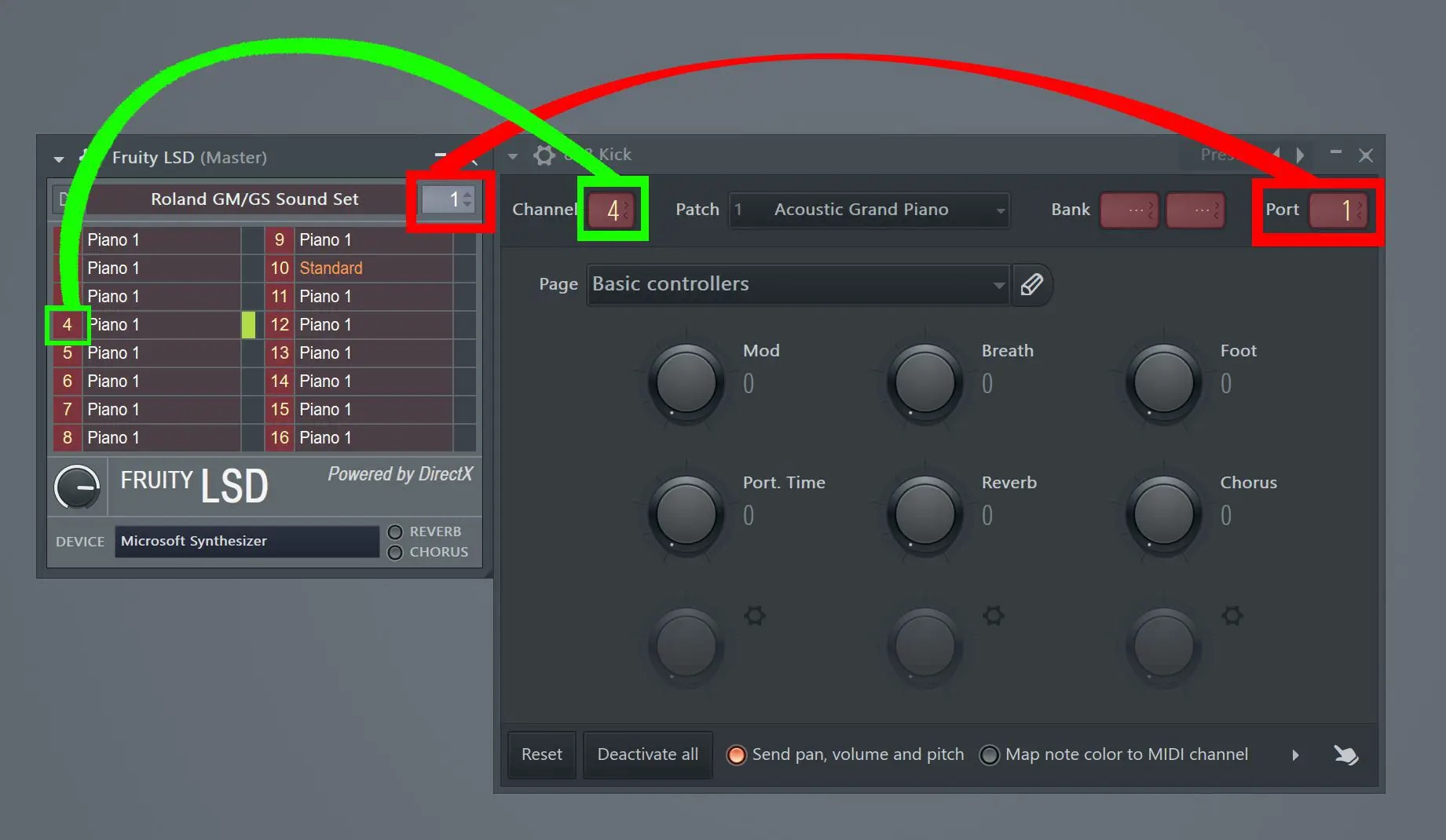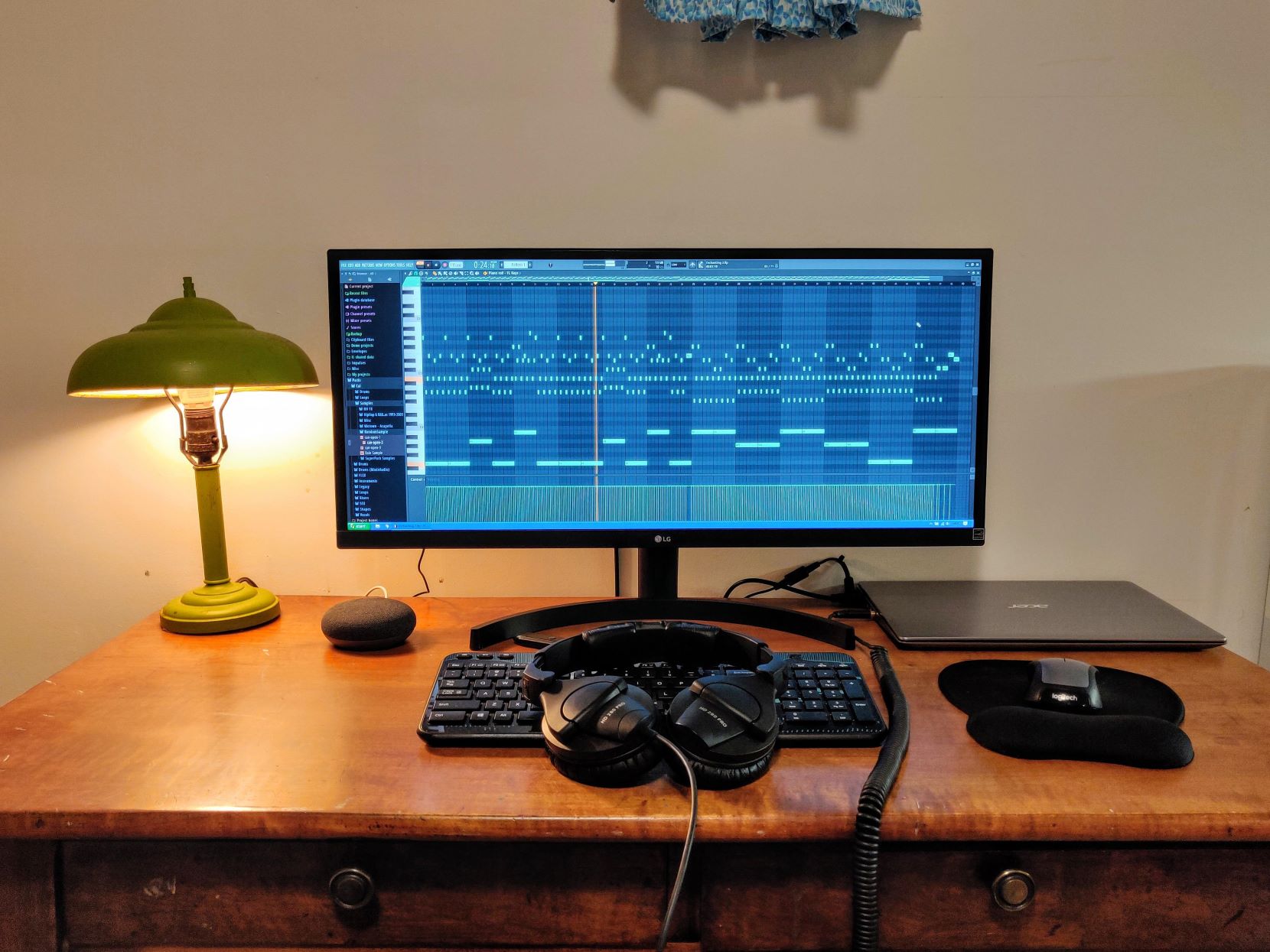

Reggae
How To Make Reggae Music In FL Studio
Modified: January 22, 2024
Learn how to create Reggae music using FL Studio with step-by-step tutorials and techniques. Discover the secrets to producing authentic Reggae beats and melodies.
(Many of the links in this article redirect to a specific reviewed product. Your purchase of these products through affiliate links helps to generate commission for AudioLover.com, at no extra cost. Learn more)
Table of Contents
Introduction
Welcome to the exciting world of Reggae music! Reggae is a unique and vibrant genre that originated in Jamaica in the late 1960s. Known for its infectious rhythms, soulful melodies, and socially conscious lyrics, Reggae has captivated music lovers all over the world.
Whether you’re a musician, a producer, or simply a fan of the genre, creating your own Reggae music can be a rewarding and fulfilling experience. With the right tools and techniques, you can capture the essence and spirit of this influential genre in your own compositions.
In this article, we will explore the process of making Reggae music using FL Studio, one of the most popular digital audio workstations (DAWs) in the industry. FL Studio provides a wide range of features and functionalities that make it ideal for producing Reggae tracks, from crafting the rhythmic backbone to adding melodic elements and vocal layers.
Whether you’re a beginner or an experienced producer, this guide will take you through the step-by-step process of creating your own Reggae music in FL Studio. We’ll cover everything from setting up your project and choosing the right instruments to incorporating dub effects and mixing and mastering your tracks.
So, if you’re ready to dive into the world of Reggae music production, strap on your headphones, fire up FL Studio, and let’s get started on our journey to create some infectious Reggae grooves!
Overview of Reggae Music
Reggae music originated in Jamaica in the late 1960s and quickly gained popularity worldwide. It is characterized by its distinctive rhythms, often featuring off-beat accents known as the “skank,” which gives Reggae its infectious groove.
Reggae is deeply rooted in Jamaican culture and history. It emerged as a form of musical expression that reflected the social and political issues of the time. Many Reggae songs carry messages of unity, social justice, and resistance, addressing topics such as poverty, inequality, and discrimination.
The genre is heavily influenced by various musical styles, including traditional Jamaican mento and ska, as well as R&B, jazz, and African rhythms. Reggae often features powerful basslines, melodic guitar riffs, and rhythmic drum patterns that create a distinct sound.
One of the most iconic figures in Reggae music is the legendary Bob Marley. His music not only popularized Reggae globally but also became a powerful voice for social change. Marley’s timeless hits such as “One Love,” “Get Up, Stand Up,” and “Redemption Song” continue to resonate with people around the world.
Aside from Bob Marley, other influential Reggae artists include Peter Tosh, Jimmy Cliff, Bunny Wailer, and Toots and the Maytals. Each of these artists has made significant contributions to the development and evolution of the genre, shaping its sound and message.
Over the years, Reggae has branched out into various sub-genres, including Roots Reggae, Dancehall, and Dub. Roots Reggae focuses on traditional elements of the genre and often features conscious lyrics and spiritual themes. Dancehall, on the other hand, has a stronger emphasis on rhythm and is known for its energetic beats and melodic hooks. Dub is a sub-genre that emerged from Reggae, characterized by its heavy use of effects and remixing techniques.
Reggae music has a universal appeal and continues to inspire countless artists across different genres. Its infectious rhythms, positive messages, and uplifting vibes make it a beloved genre for music lovers worldwide.
Getting Started with FL Studio
If you’re new to FL Studio, don’t worry! This section will guide you through the initial steps of getting started with the software and setting up your workspace for Reggae music production.
First, make sure you have FL Studio installed on your computer. You can either purchase the software or download the free trial version from the official Image-Line website. Once you have it installed, open FL Studio and let’s get started!
FL Studio is organized into different sections or panels that serve specific purposes. The main interface consists of the Channel Rack, Playlist, and Piano Roll. The Channel Rack is where you create and layer different instruments and sounds. The Playlist is where you arrange and sequence your patterns, while the Piano Roll allows you to edit and fine-tune melodies and chords.
When starting a new project, it’s essential to set the BPM (Beats Per Minute) to establish the tempo of your Reggae track. Reggae music typically has a slower tempo, ranging from around 60 to 90 BPM. Adjust the BPM in FL Studio by clicking on the Metronome button or using the tempo control in the Transport Panel.
Next, choose a time signature for your project. Most Reggae music is in 4/4 or common time, meaning there are four beats in each measure. This time signature provides a steady and predictable rhythm that is characteristic of the genre.
Now that you have your project set up with the appropriate tempo and time signature, you can start building your Reggae track. In the next sections, we will explore how to choose the right instruments and sounds, create a rhythmic backbone, add melodic elements, and incorporate vocals and dub effects to bring your Reggae music to life!
Setting Up Your Project
When setting up your project in FL Studio for Reggae music production, there are a few important considerations to keep in mind to ensure a smooth and efficient workflow.
First, let’s start by organizing your project. Create folders and subfolders within FL Studio to keep your files and sounds organized. This will make it easier to locate and access specific elements of your project as it grows in complexity.
Next, think about the arrangement of your track. The structure of your Reggae song typically consists of verses, choruses, and possibly a bridge section. The Playlist in FL Studio allows you to arrange and sequence your patterns, so use this feature to develop the structure of your song.
Now, let’s talk about tracks and channels. Each instrument, sound, or vocal element should have its own track or channel in FL Studio. This allows you to have individual control over each element’s volume, pan, and effects. To add a new track or channel, simply right-click in the Channel Rack and select “Add Track” or “Add Channel.”
When it comes to track organization, color-coding can be a helpful tool. Assign different colors to different instruments or sections of your song. This visual distinction can make it easier to navigate and work with your tracks as you’re building the arrangement.
Don’t forget to save your project regularly. FL Studio allows you to save your work as a .flp file, which stands for FL Studio Project. Saving your project frequently ensures that you don’t lose any progress in case of a computer crash or unexpected shutdown.
Lastly, consider setting up a system for backups. FL Studio offers an autosave feature, but it’s also a good idea to manually save copies of your project at different stages of development. This way, if something goes wrong or you want to revert to an earlier version, you have backup files to rely on.
By setting up your project effectively, you’ll be able to work more efficiently and navigate through your Reggae music production process with ease. Take the time to organize, plan out your arrangement, and save your work regularly to ensure a seamless and productive workflow in FL Studio.
Choosing the Right Instruments and Sounds
When it comes to creating authentic Reggae music, choosing the right instruments and sounds is crucial. Reggae is known for its distinctive sonic elements, and selecting the appropriate sounds can help bring that classic Reggae vibe to your tracks. Here are some essential instruments and sounds to consider:
- Bass: The bass is the backbone of Reggae music and often plays a prominent role. Look for a deep and punchy bass sound with a warm and round tone. Consider using a live bass guitar or a sampled bass instrument to achieve that classic Reggae bassline.
- Guitar: The guitar in Reggae music typically plays rhythmic chords on the offbeat, providing a skanking pattern. Utilize a clean electric guitar sound or a guitar emulation plugin to capture the authentic Reggae guitar sound.
- Drums: The drums in Reggae music are typically characterized by a laid-back and groovy feel. Look for drum samples or virtual drum kits that offer a selection of authentic Reggae drum sounds, including a tight and crisp snare, a deep kick drum, and a variety of hi-hat and cymbal textures.
- Keyboards: Keyboard instruments, such as the organ and piano, are often used in Reggae music to add melodies and chords. Look for a warm and vintage organ sound or a bright and percussive piano sound to complement your Reggae tracks.
- Horns: Adding horn sections can bring an extra layer of richness and energy to your Reggae music. Consider using virtual horn instruments or recorded horn samples to create the iconic horn lines and melodies found in many Reggae songs.
- Percussion: Percussion elements play an important role in Reggae music, adding texture and rhythm to the tracks. Look for percussion instruments such as tambourines, shakers, congas, and bongos to fill out your percussion section and add that authentic Reggae groove.
Experiment with different combinations of instruments and sounds to create your unique Reggae sound. Don’t be afraid to layer different instruments and textures to add depth and complexity to your tracks. Remember, the goal is to capture the essence and vibe of Reggae music, so choose instruments and sounds that best resonate with the genre.
Additionally, whether you’re using virtual instruments or recorded samples, ensure they are of high quality to achieve a professional sound. Take the time to tweak and adjust the settings of each instrument to fit the overall mix and create the desired Reggae sound.
Now that you’ve chosen the right instruments and sounds, it’s time to dive into creating a solid rhythm section for your Reggae tracks. In the next section, we’ll explore how to build the rhythmic foundation that will make your Reggae music groove and come to life.
Creating a Reggae Rhythm Section
The rhythm section is the heartbeat of any Reggae track, providing the groovy foundation that makes the music come alive. In this section, we’ll explore how to create a solid Reggae rhythm section in FL Studio.
First and foremost, the drum beat sets the rhythm in Reggae music. Start by selecting a drum kit or individual drum samples that have a crisp and tight sound. The kick drum should have a deep and punchy tone, while the snare should be sharp and snappy. Experiment with different hi-hat and cymbal patterns to create the desired feel.
In Reggae, the snare drum typically accentuates the third beat of the measure, giving the rhythm its characteristic offbeat feel. This is often referred to as the “one-drop” pattern. Experiment with placing the snare on different beats to create variations and add interest to your drum groove.
Once you have the drum beat in place, it’s time to focus on the bassline. Reggae basslines are usually melodic and syncopated, emphasizing the offbeats. Use a bass instrument or a bass guitar to create a deep, bouncy, and rhythmic bassline. Explore different note patterns and variations to find a groove that complements your drum beat.
The guitar in Reggae music plays a significant role in creating the skanking rhythm. Use a clean electric guitar sound or a guitar emulation plugin to strum rhythmic chords on the offbeats. This will add a percussive element and give your track that authentic Reggae vibe. Experiment with different strumming patterns and voicings to create interesting and dynamic guitar parts.
Don’t forget the importance of the keyboard instruments in the Reggae rhythm section. The organ, piano, and other keyboard sounds can add melodic chords and stabs to complement the bass and guitar. Experiment with chord progressions and rhythmic patterns to find combinations that enhance the overall groove of your track.
Lastly, the percussion elements in Reggae music add texture and depth to the rhythm section. Consider adding tambourines, shakers, congas, and bongos to fill out the percussion section. Experiment with different patterns and accents to create a lively and engaging rhythm.
Remember, the key to creating a great Reggae rhythm section is to focus on the interplay between the drums, bass, guitar, keyboards, and percussion. Each element should complement and enhance the others, creating a tight and groovy foundation for your Reggae tracks.
Now that you have your Reggae rhythm section in place, it’s time to add melodic elements and explore the magic of melody in the next section.
Adding Melodic Elements
Now that you have a solid Reggae rhythm section in place, it’s time to add melodic elements that will bring your tracks to life. Melodies play a crucial role in Reggae music, adding depth, emotion, and memorable hooks. Here are some tips for incorporating melodic elements into your Reggae tracks in FL Studio.
Start by choosing a lead instrument that will carry the main melody of your track. This could be a keyboard instrument like an organ or a synth, a guitar, or even a vocal line. Experiment with different sounds and timbres to find one that fits the vibe and character of your track.
Reggae melodies often follow the chords and harmonic structure of the song. Begin by analyzing the chord progression of your track and identify the key notes or intervals that will make up your melody. Focus on creating melodies that are catchy, soulful, and fit well with the rhythm section.
Once you have your main melody, consider adding additional layers and harmonies. For example, you can create harmonies by duplicating the melody and offsetting it in time or pitch. This can create a rich and lush sound that adds dimension and complexity to your Reggae tracks.
Don’t forget about the importance of vocal melodies in Reggae music. Whether you’re recording your own vocals or using sampled vocals, focus on creating memorable and catchy melodies that complement the instruments. Layering harmonies and backing vocals can also add depth and richness to your tracks.
Incorporating instrumental solos is another effective way to add melodic interest to your Reggae tracks. Consider featuring instruments like the guitar, keyboard, or saxophone for improvised solos. These solos can provide moments of musical expression and take your tracks to another level.
Experiment with different melodic variations and motifs throughout your track. You can create variations by adding embellishments, rhythmic changes, or by transposing the melody to different octaves. This will keep the listener engaged and prevent your track from becoming repetitive.
Remember, the goal is to create melodic elements that complement and enhance the overall feel and groove of your Reggae tracks. Take your time to craft melodies that are memorable, soulful, and reflective of the Reggae genre.
With the rhythmic and melodic elements in place, it’s time to explore the addition of vocals and the incorporation of dub effects in the next sections to truly capture the essence of Reggae music.
Layering Vocals and Harmonies
Vocals play a significant role in Reggae music, conveying powerful messages and adding an emotional touch to the tracks. Layering vocals and harmonies can bring depth, richness, and texture to your Reggae songs. Here are some tips for effectively layering vocals and harmonies in FL Studio.
Start by recording the lead vocals for your track. Find a talented vocalist who can bring the desired emotion and character to the song. Ensure that the vocals are well-performed and cleanly recorded, using a high-quality microphone and appropriate recording techniques.
Once you have the lead vocal recorded, you can begin layering harmonies to enrich the vocal section. Harmonies are additional vocal parts that complement the lead vocals and create a fuller sound. Experiment with different harmony arrangements to find ones that enhance the overall mood and vibe of the song.
When recording harmonies, pay attention to their pitch and timing. Harmonies should be in tune with the lead vocal and should synchronize well with the rhythm section. Consider using multiple takes to record different harmony parts and ensure a tight and cohesive performance.
FL Studio offers various tools and plugins that can help you process and blend the vocal layers seamlessly. Use features like pitch correction, equalization, and compression to refine the vocal recordings and create a polished sound. Be careful not to overprocess the vocals, as it can lead to an unnatural and artificial sound.
In addition to traditional harmonies, Reggae music often incorporates call-and-response vocal patterns. These involve different vocal parts responding to each other in a call and response fashion. Experiment with this technique to add dynamic and interactive elements to your Reggae tracks.
Remember to experiment with panning and spatial effects to create a sense of depth and dimension in your vocal layers. Pan different vocal parts to different positions in the stereo field, and consider adding subtle reverb or delay effects to create a spacious and immersive vocal sound.
Lastly, balancing the vocal layers with the instrumental elements is crucial. Ensure that the vocals are clear and intelligible, yet blend well with the overall mix. Use volume automation and EQ adjustments to achieve the desired balance between the vocals and the accompanying instruments.
By effectively layering vocals and harmonies, you can bring a captivating and soulful element to your Reggae tracks. Carefully consider the arrangement, processing, and blending of the vocal layers to create a cohesive and engaging listening experience.
Now that you have the vocals and harmonies in place, let’s delve into the world of dub effects and how they can enhance your Reggae tracks in FL Studio.
Incorporating Dub Effects
Dub effects are an integral part of Reggae music, adding a unique and distinctive sound to the tracks. These effects originated from the dub music genre, which emerged in Jamaica in the 1960s. Incorporating dub effects into your Reggae tracks in FL Studio can enhance the overall atmosphere and give your music that classic dub flavor. Here’s how you can incorporate dub effects in your production:
1. Reverb and Delay: Reverb and delay are essential components of dub effects. They add space and depth to your sounds, creating a sense of ambience. Experiment with different reverb and delay settings to achieve the desired effect. Apply reverb to instruments such as drums, guitars, and vocals, and use delay to create rhythmic echoes or dub-style repeats.
2. Filtering and Automation: Utilize filtering techniques to create dynamic and evolving sounds. Apply low-pass or high-pass filters to introduce gradual changes to the frequency content of your instruments. You can automate these filters to add movement and interest to specific sections of your track.
3. Dub Sirens and Sound Effects: Incorporate classic dub sirens and sound effects to add excitement and impact to your Reggae tracks. These effects can be added during breaks or transitions to create a dramatic effect. FL Studio provides a wide variety of sound effect samples that you can browse and incorporate into your project.
4. Chopping and Stuttering: Create unique rhythmic patterns by chopping and stuttering certain elements of your track. This can be done with vocals, instruments, or drum elements. Experiment with rhythmic gating, stutter effects, and sample manipulation to create interesting and unexpected grooves.
5. Dub Mixing Techniques: Embrace the art of dub mixing by emphasizing different elements of your track. Experiment with software-based mixing consoles in FL Studio to manipulate the levels, EQ, and effects of individual track elements in real-time. This technique allows you to create dub-style drops, build-ups, and emphasis on specific instruments or vocal sections.
6. Sampling and Dubbing: Emulate the classic dub style by sampling and dubbing. Take snippets of your track, vocals, or instrument parts and manipulate them using effects like tape saturation, phasing, and flanging. The goal is to create unique and trippy versions of the original elements, adding a dub-infused texture to your music.
Remember, dub effects are about experimentation and creativity. Don’t be afraid to push boundaries and try out different combinations of effects to achieve the desired dub sound. Embrace the spirit of dub and let your creativity drive the incorporation of these effects into your Reggae tracks.
Now that you have a solid understanding of incorporating dub effects, let’s move on to the final stage of the Reggae music production process – mixing and mastering.
Mixing and Mastering Your Reggae Track
Once you have completed the composition and arrangement of your Reggae track, it’s time to dive into the crucial stages of mixing and mastering. These processes ensure that your track sounds polished, balanced, and professional. Here’s a step-by-step guide to mixing and mastering your Reggae track in FL Studio:
1. Mixing: Start by adjusting the levels of each track in your project. Ensure that all instruments and vocals are balanced and sit well together in the mix. Use volume automation and panning to create a sense of space and separation between the elements. Pay special attention to the drums, bass, vocals, and lead instruments to make sure they are properly emphasized in the mix.
2. Equalization (EQ): Apply EQ to your individual tracks to enhance their clarity and remove unwanted frequencies. Pay attention to the low end, as the bass and kick drum should be well-defined and present. Use EQ to carve out space for each instrument, ensuring they don’t clash and muddy up the mix. Experiment with gentle boosts and cuts to shape the tone of each element.
3. Compression and Dynamics: Utilize compression to control the dynamics of your tracks. Apply subtle compression to even out levels and give instruments a more consistent sound. Use a gentle ratio and adjust the attack and release settings to retain the natural dynamics of the instruments while taming any peaks. Be careful not to over-compress, as it can result in a lifeless and unnatural sound.
4. Effects and Processing: Enhance your Reggae track with the use of effects such as reverb, delay, and modulation. Apply these effects sparingly to create ambiance and depth. Consider using modulation effects like chorus or phaser to add movement to certain instruments. Experiment with creative processing to give your track a unique character and vibe.
5. Stereo Imaging: Use stereo imaging techniques to widen the stereo field and create a spacious mix. Consider panning instruments across the stereo spectrum to give them their own space and prevent sonic congestion. Use stereo wideners or imaging plugins to enhance the stereo width of certain elements, but be mindful of maintaining a balanced and cohesive sound.
6. Mastering: The final step is mastering, which involves making the track sound consistent and polished across different playback systems. Apply subtle mastering EQ to shape the overall frequency response of the track. Use multiband compression to control the dynamics and balance of the mix. Apply a limiter to ensure the track reaches an appropriate loudness level without sacrificing dynamics.
When mastering your Reggae track, it’s important to reference other well-mixed and mastered Reggae tracks that you admire. This will help you align your track’s tonal balance, loudness, and overall feel with the genre’s standards.
As you mix and master your Reggae track, take breaks and listen to your mix on different audio systems to ensure it translates well across various playback mediums. Trust your ears and make adjustments based on what sounds best to you.
By carefully mixing and mastering your Reggae track, you can achieve a professional and polished sound that showcases the essence and vibe of Reggae music.
Now that you have completed the final stages of production, it’s time to celebrate your hard work and share your Reggae masterpiece with the world.
Conclusion
Congratulations on completing your journey into the world of Reggae music production in FL Studio! Throughout this article, we’ve explored the essentials of creating a Reggae track, from setting up your project and choosing the right instruments and sounds to crafting a solid rhythm section and incorporating melodic elements, vocals, and dub effects. We’ve also touched on the important stages of mixing and mastering to ensure a polished and professional sound.
Reggae music is a genre that speaks of love, unity, and social consciousness. It allows you to express yourself creatively while immersing yourself in infectious rhythms and soulful melodies. With FL Studio, you have a powerful tool at your disposal to bring your Reggae vision to life.
As you continue on your Reggae music production journey, don’t be afraid to explore different techniques, experiment with new ideas, and develop your own unique sound. Take inspiration from the legends of Reggae and let your creativity flourish.
Remember, producing Reggae music is not only about capturing the vibe and authenticity of the genre but also about expressing your own artistry and creativity. Use the knowledge and tips shared in this article as a foundation, and build upon them to create your own unique style of Reggae.
Lastly, keep practicing, keep learning, and most importantly, keep having fun with your music. Reggae has a rich history and a timeless appeal, and your dedication to mastering its intricacies will shine through in your productions.
So, grab your headphones, fire up FL Studio, and let the infectious grooves of Reggae guide you on a musical journey of expression, unity, and love.

